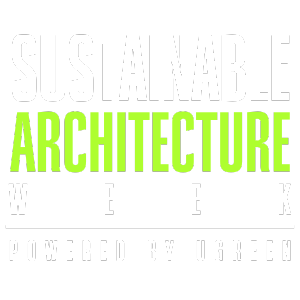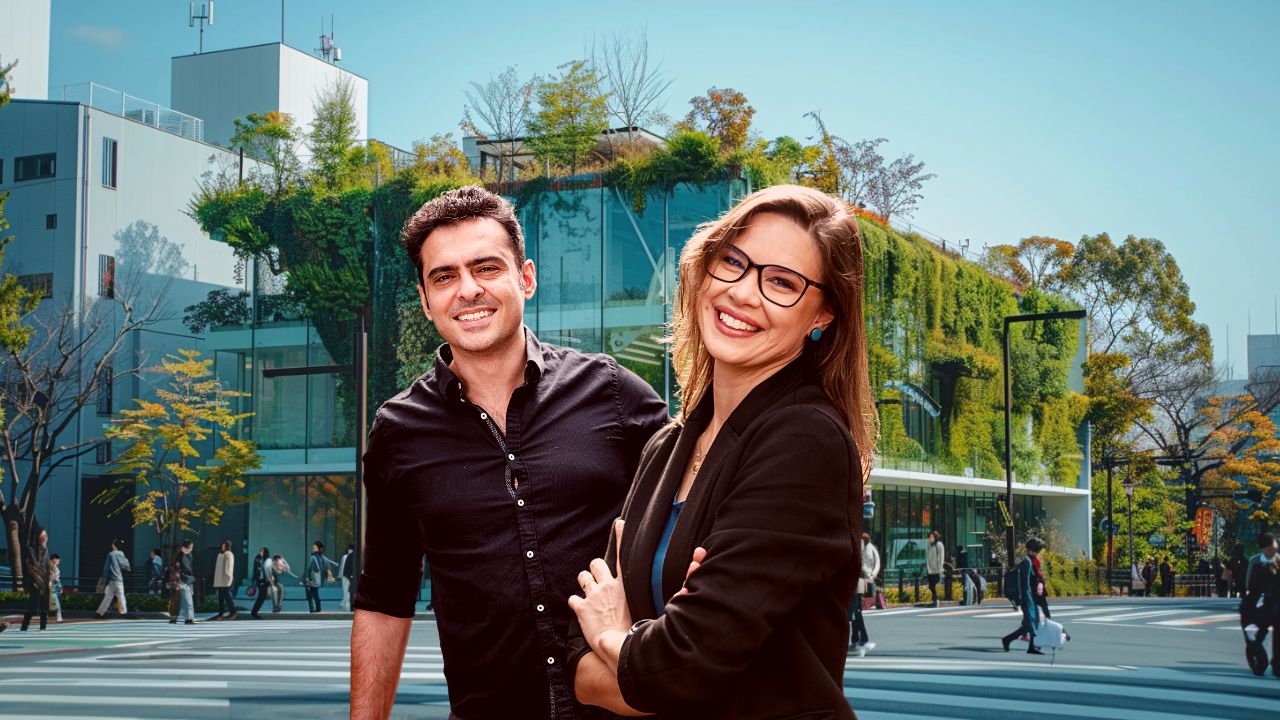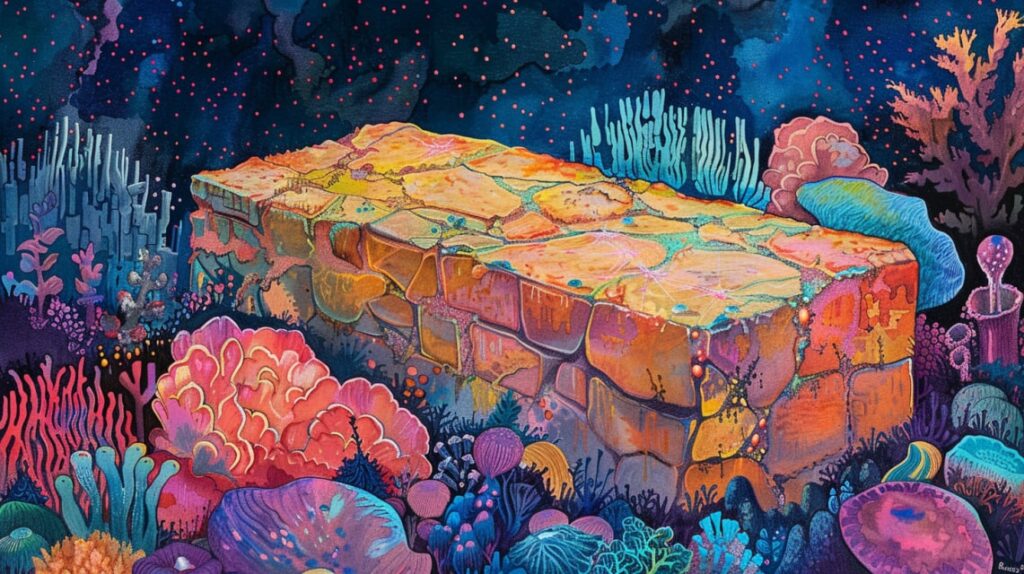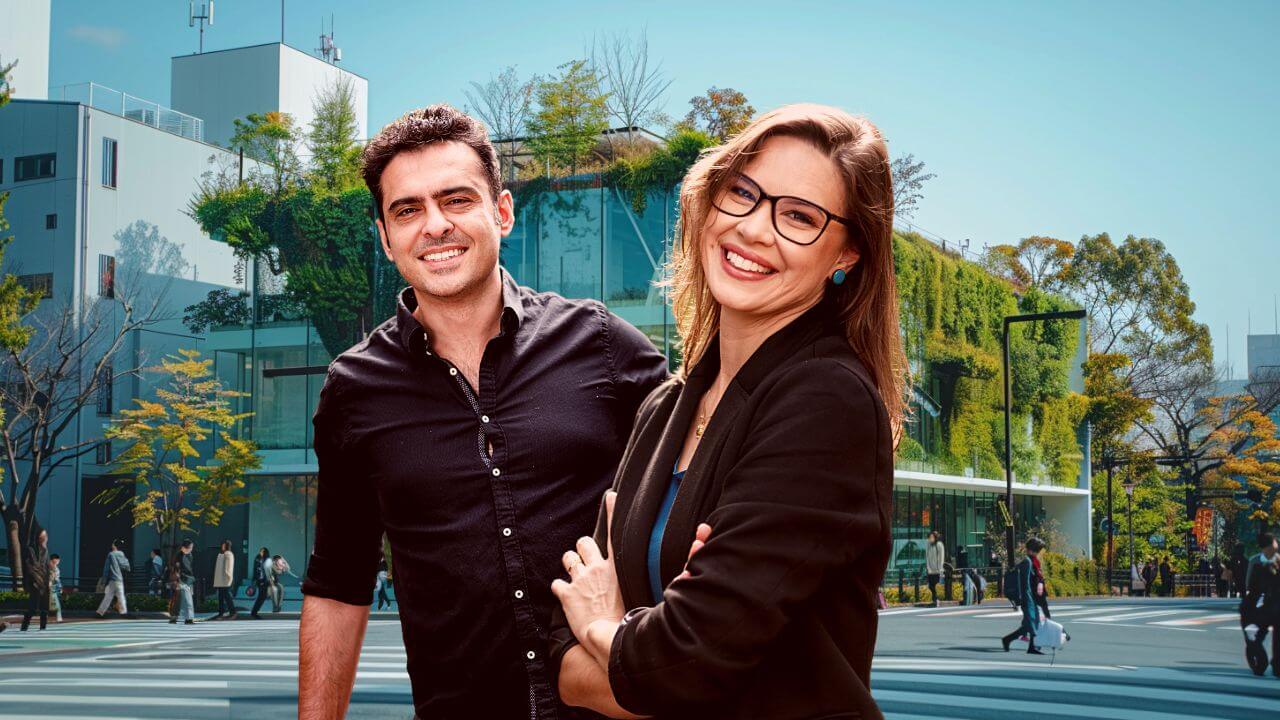





a FREE GLOBAL EVENT to the Forefront of SUSTAINABLE DESIGN
The quest for sustainable construction materials has led to the discovery and innovation of using mycelium, the root structure of fungi, as a revolutionary building material. Mycelium, a network of fungal threads or hyphae, presents a compelling alternative to traditional construction materials due to its renewable nature, rapid growth on agricultural waste, and impressive physical properties.
This section will explore the basics of fungal mat, including its biological makeup, how it’s being harnessed for construction, and why sustainable materials are crucial for the future of the construction industry. We’ll delve into the environmental impact of traditional construction materials and the urgent need for sustainable alternatives to mitigate climate change and reduce the carbon footprint of new buildings.
Why Mycelium? Environmental and Economic Benefits
Mycelium stands out in the sustainable construction materials category for several reasons: its biodegradability, carbon-negative potential, and the economic benefits it offers. Unlike traditional materials, which contribute significantly to landfill waste and carbon emissions, mycelium-based products decompose naturally, leaving minimal environmental impact.
This section will discuss the environmental benefits of using fungal mat, such as its ability to grow on agricultural byproducts, thereby turning waste into valuable construction materials while capturing carbon dioxide. Additionally, we’ll examine the economic considerations for builders and developers, including the cost-effectiveness of mycelium materials, market trends favoring sustainable solutions, and the potential for mycelium to revolutionize the construction industry by offering a scalable and sustainable alternative to conventional building materials.
3. Real-world Applications of Mycelium and Success Stories
The application of mycelium in construction is not just theoretical but has been successfully implemented in various projects around the world. From MycoComposite panels used in architecture to mycelium-based furniture and design, this section will showcase how fungal mat is being used in real-world construction and design projects. We’ll highlight specific case studies where fungal mat has been utilized to create sustainable, innovative, and aesthetically pleasing structures and products.
This will include a look at the versatility of fungal mat, from structural building materials to insulation and acoustic panels, and how designers and architects are incorporating mycelium into their projects to push the boundaries of sustainable design. The success stories will underscore the practicality, feasibility, and environmental benefits of mycelium, encouraging further adoption and innovation in the construction industry.










a FREE GLOBAL EVENT to the Forefront of SUSTAINABLE DESIGN
Comparative Advantages Over Traditional Materials
Mycelium’s rise in the construction sector is not without reason; its properties offer distinct advantages over traditional construction materials like concrete, wood, and plastics. Key among these are its environmental benefits, but the material also stands out for its physical characteristics.
- Sustainability and Environmental Impact: Mycelium-based materials contribute to a significant reduction in the construction industry’s carbon footprint. Unlike conventional materials that require extensive mining, processing, and transportation—all of which are carbon-intensive—fungal mat grows rapidly in a controlled environment, utilizing agricultural waste as its substrate. This process not only recycles waste but also captures carbon, making mycelium a carbon-negative material. After its use, fungal mat can be composted, returning nutrients to the soil without leaving harmful residues.
- Insulation, Strength, and Safety: Mycelium exhibits excellent thermal and acoustic insulation properties, comparable to or even surpassing those of many traditional materials. Its natural structure provides a high level of fire resistance without the need for chemical additives, offering a safer alternative to materials that release toxic fumes when burned. Structurally, fungal mat materials can be engineered to match or exceed the strength and durability of conventional options, with the added benefit of being significantly lighter, reducing transportation and construction costs.
- Economic Implications: While the initial cost of mycelium-based materials may be higher than some traditional options, their lifecycle costs are competitive when considering their sustainability benefits, potential energy savings due to superior insulation properties, and the reduced environmental cleanup costs. Additionally, the growing demand for sustainable building materials is likely to drive further research and development, increasing the scalability and cost-effectiveness of fungal mat production.
Challenges and Solutions in Mycelium Adoption
Despite the promising advantages, the integration of mycelium into mainstream construction faces several challenges. These include:
- Durability and Weather Resistance: Concerns about mycelium’s durability, especially in wet conditions or extreme climates, have prompted research into biofabrication methods that enhance its resistance without compromising its biodegradability.
- Regulatory and Industry Standards: The novel nature of fungal mat as a construction material means that current building codes and standards may not accommodate its use, necessitating advocacy and collaboration with regulatory bodies to develop standards that ensure safety and performance while fostering innovation.
- Production and Growth Speed: While mycelium grows relatively quickly compared to the production of traditional materials, scaling up to meet large-scale construction demands poses logistical challenges. Ongoing advancements in biotechnology are expected to accelerate growth rates and improve the efficiency of mycelium material production.
The construction industry’s shift towards sustainable materials like fungal mat is indicative of a broader recognition of the need for environmental stewardship and innovation. By addressing these challenges, mycelium not only promises to revolutionize the way we build but also aligns construction practices with the urgent need for sustainability and ecological balance.


The Science Behind Mycelium: From Spores to Structures
The process of creating mycelium-based construction materials involves several steps, from the initial inoculation of substrates with fungal spores to the final product’s formation. Understanding this process highlights mycelium’s versatility and the science that enables its use in sustainable construction.
- Inoculation: The journey begins with the inoculation of a growth substrate—often agricultural byproducts like sawdust or straw—with fungal spores. This mixture is then placed in a mold corresponding to the desired shape of the final product.
- Growth: Over days or weeks, the fungal mat consumes the substrate, binding it together as it grows. The conditions under which this growth occurs, including temperature, humidity, and carbon dioxide levels, are carefully controlled to optimize the mycelium’s development.
- Harvesting: Once the fungal mat has fully colonized the substrate and reached the desired density and strength, growth is halted, usually by heat treatment. This process kills the fungus, preventing further growth and ensuring the material’s stability.
- Finishing: The resulting mycelium composite can then be dried and finished as needed for its intended application, from building blocks to insulation panels.
Table 1: Comparison of Mycelium and Traditional Materials
| Property | Mycelium-Based Materials | Traditional Materials |
|---|---|---|
| Sustainability | High (biodegradable, carbon-negative) | Variable (often low) |
| Production Energy | Low | High |
| Insulation Properties | Excellent (thermal and acoustic) | Variable |
| Fire Resistance | High | Variable |
| Weight | Light | Variable |
| Durability | Good (with treatment) | High |
| Cost | Competitive lifecycle cost | Low initial, high lifecycle |
Economic Considerations for Builders and Developers
The economic viability of mycelium in construction hinges on several factors that affect both the cost and the long-term value of mycelium-based projects.
- Initial Investment vs. Long-term Savings: Although the initial cost of mycelium materials may be higher than some traditional materials, the overall lifecycle savings, through reduced energy costs and environmental impact fees, can be substantial.
- Scaling Production: Advancements in production technology and processes are making mycelium materials more affordable and accessible, with the potential for significant reductions in cost as the market grows and production efficiencies are realized.
- Market Demand: Consumer and corporate demand for sustainable building materials is rising, driven by increased environmental awareness and regulatory pressures. This demand is likely to support higher price points for sustainable solutions, including mycelium-based materials.
List of Factors Influencing Mycelium Material Adoption
- Environmental benefits and regulatory compliance
- Lifecycle cost savings
- Market demand for sustainable construction materials
- Advances in production and processing technology
- Collaboration with research institutions for material development
Architectural Innovations Using Fungal Hyphae Network
Mycelium’s unique properties have inspired architects and designers to explore new forms of sustainable architecture. From structural elements to interior design, mycelium is being incorporated in innovative ways.
- Structural Components: Mycelium is used to create lightweight yet strong building blocks and panels, offering a sustainable alternative for walls, roofs, and insulation.
- Interior Design: Beyond structural applications, fungal mat finds use in furniture, acoustic panels, and decorative elements, showcasing its versatility and aesthetic potential.
- Innovative Projects: Examples include the MycoTree, a structural installation showcased at the Seoul Biennale of Architecture and Urbanism, and the Hy-Fi tower in New York, demonstrating mycelium’s potential in large-scale constructions and as a viable material for future architectural endeavors.
The continued exploration and application of mycelium in architecture underscore its potential to significantly impact sustainable construction practices, offering a path toward more environmentally friendly and economically viable building solutions.
Navigating Regulations and Standards for Mycelium Construction
The adoption of mycelium as a construction material is not only a technical challenge but also a regulatory one. Establishing standards and navigating building codes are crucial steps for widespread acceptance.
- Current Regulatory Landscape: Most building codes and standards do not specifically address mycelium-based materials, necessitating a case-by-case approval process that can hinder development and implementation.
- Efforts Toward Standardization: Collaborative efforts between industry stakeholders, researchers, and regulatory bodies are underway to establish standards for mycelium construction materials, focusing on safety, performance, and environmental impact.
- Advocacy and Education: Educating policymakers and the public about the benefits and viability of mycelium materials is essential to overcome regulatory barriers and foster a regulatory environment that supports sustainable innovation.
Table 2: Regulatory and Standardization Challenges vs. Solutions
| Challenge | Solution |
|---|---|
| Lack of specific standards | Collaborate to create mycelium material codes |
| Case-by-case approval process | Advocate for broader acceptance and recognition |
| Public and policy awareness | Conduct educational and advocacy campaigns |
The Future of Mycelium in Construction
The potential of mycelium in the construction industry is vast, with ongoing research and development promising to unlock new applications and improve the material’s properties and production processes.
- Technological Advancements: Innovations in genetic engineering and material science could enhance the strength, durability, and growth speed of fungal mat, broadening its applicability.
- Increased Adoption: As awareness grows and mycelium-based products become more cost-effective, their adoption is expected to increase, potentially making them a mainstream construction material.
- Sustainability Goals: Mycelium’s role in construction aligns with global sustainability goals, offering a pathway to reduce the industry’s environmental impact and contribute to a circular economy.










a FREE GLOBAL EVENT to the Forefront of SUSTAINABLE DESIGN
List of Potential Future Developments in Mycelium Construction
- Development of hybrid materials combining mycelium with other sustainable substances for enhanced properties.
- Creation of living mycelium structures capable of growth and self-repair.
- Expansion into large-scale infrastructure projects, such as bridges and public buildings.
- Advancements in modular and prefabricated mycelium construction elements for quick and efficient building processes.
Conclusion: The Role of Mycelium in Shaping Sustainable Futures
Mycelium in construction represents a pioneering approach to sustainable building practices, offering a material that is not only environmentally friendly but also versatile, durable, and aesthetically pleasing. As the construction industry continues to evolve, fungal mat stands at the forefront of innovation, challenging traditional practices and offering a glimpse into a more sustainable future.
The journey from spores to structures encapsulates a broader movement towards ecological stewardship, circular economy principles, and a reimagining of what it means to build sustainably. The continued exploration, adoption, and advocacy for mycelium and similar biomaterials are essential in our collective effort to mitigate the environmental impacts of construction and pave the way for a greener, more resilient built environment.
If you want to learn about our courses and consultancies in Portuguese language, click here.










a FREE GLOBAL EVENT to the Forefront of SUSTAINABLE DESIGN
